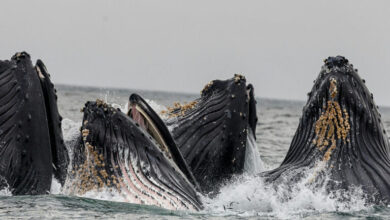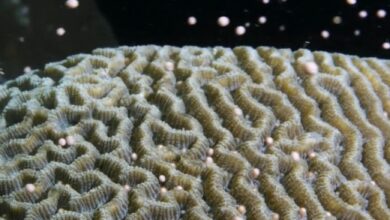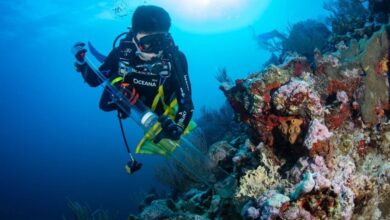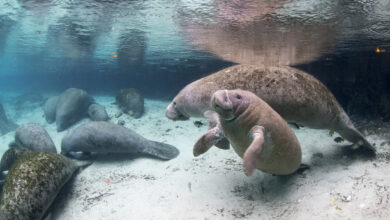The submersible Alvin collects samples from rocky outcrop in the newly discovered coral reef. L. Robinson (U. Bristol), D. Fornari (WHOI), M. Taylor (U. Essex), D. Wanless (Boise State U.) NSF / NERC / HOV Alvin / WHOI MISO Facility, 2023 ©Woods Hole Oceanographic Institution
Environment EcuadorRare and Pristine Coral Reef Discovered
While exploring uncharted areas of Ecuador’s Galápagos Marine Reserve, a group of scientists came across ancient, deep-sea coral reefs in pristine condition, a rarity in the underwater world.
“This reef was pristine; just a dense mass of layers of ancient coral with a frosting of live coral across the top,” explains Michelle Taylor, deep-sea marine biologist at the University of Essex in England and co-leader of the expedition. “These newly discovered reefs are potentially of global significance—a ‘canary in the mine’ for other reefs globally—sites which we can monitor over time to see how pristine habitats evolve with our current climate crisis.”
The 2-km long reef lying 0.4 kilometers beneath the ocean’s surface has been affected very little by human activities. According to the Woods Hole Oceanographic Institution, the norm is to have between 10 and 20% of coral cover with the remaining 80 to 90% being dead coral skeletons. In this rare case, between 50 and 60% of the coral cover is alive, providing a healthy habitat for pink octopus, batfish, squash lobsters, an array of deep-sea fish, sharks, and rays. The “rainforests of the sea” support some 25% of all known marine species, making them one of the most biodiverse ecosystems in the world. They also protect shorelines from erosion.



